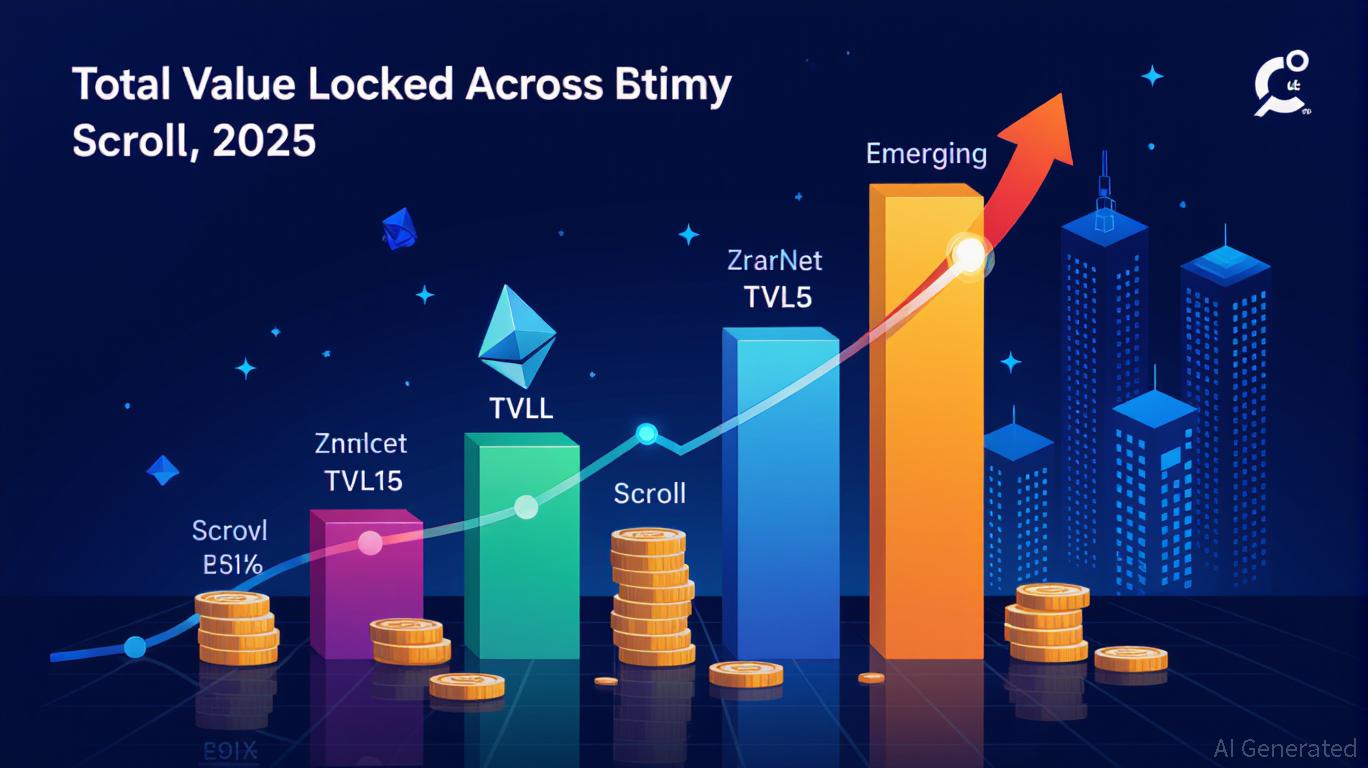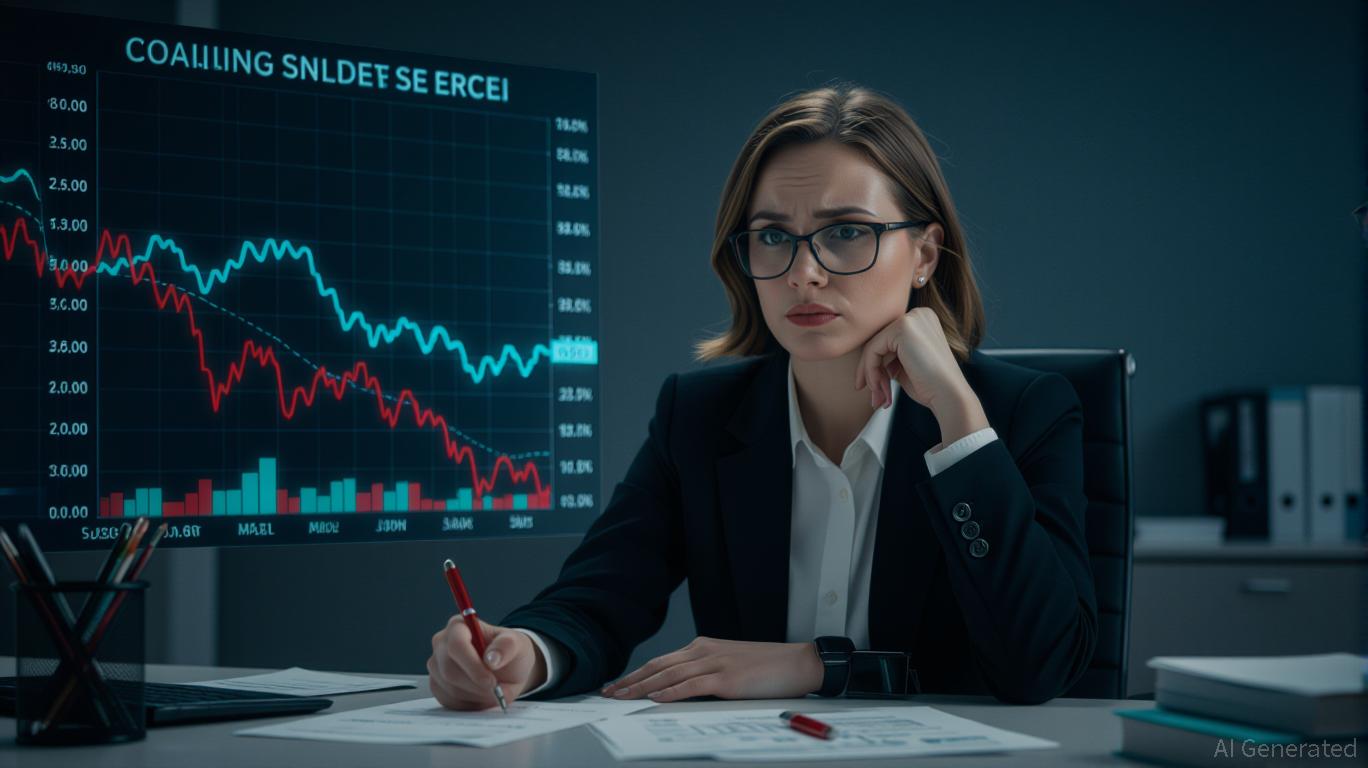Vitalik Buterin's Progress in Zero-Knowledge Technology and the Investment Opportunities within Ethereum's Layer-2 Ecosystem
- Vitalik Buterin prioritizes ZK technologies to optimize Ethereum's post-Merge scalability, targeting modexp precompile replacement for 50% faster ZK-proof generation. - ZKsync's Atlas upgrade enables 15,000+ TPS and near-zero fees by redefining L1-L2 liquidity, positioning ZK-based L2s as Ethereum's infrastructure backbone. - Dencun's "blob" data slashes L2 costs by 98%, driving Base and Arbitrum to surpass Ethereum's base layer in transaction volume and user adoption. - ZK L2s like ZKsync and StarkNet s
Technical Foundations: Vitalik’s ZK-Centric Vision
Vitalik Buterin has pointed out that the modexp precompile, an older feature used for modular exponentiation, is a major obstacle for scaling ZK-EVMs. Transitioning this function to standard EVM bytecode could cut ZK-proof creation times by as much as half, while also streamlining the
At the same time, Buterin has spotlighted ZKsync’s Atlas upgrade as a model for L2 scalability. This update achieves over 15,000 transactions per second (TPS), one-second finality, and minimal fees by transforming the liquidity dynamics between L1 and L2, as outlined in a

Market Dynamics: ZK L2s as Growth Drivers After the Merge
The Dencun upgrade to Ethereum in March 2024 further boosted the economic case for ZK L2s by introducing “blob” data, which cut L2 data posting expenses by 90–98%, as reported in a
From a financial perspective, ZK L2s are evolving into independent ecosystems. ZKsync’s revamped tokenomics, for instance, links the value of its ZK token to network earnings through mechanisms like buybacks and burns, creating a deflationary effect, as explained in a
Project Comparisons: ZKsync, StarkNet, and Scroll
During the third quarter of 2025, ZKsync’s Atlas upgrade showcased performance at an enterprise level, with its sequencer reaching 43,000 TPS and Airbender enabling transfers at just $0.0001 each, according to a
Investment Implications
The combination of technical breakthroughs and economic models in ZK L2s points to strong long-term prospects. For Ethereum, expanding L2 adoption could increase overall fees and boost ETH’s value, as L2 activity enhances the network’s usefulness. Still, issues like modexp inefficiencies and rivalry among L2s require careful consideration. Investors should focus on projects with transparent tokenomics, solid enterprise collaborations, and clear technical advantages—ZKsync’s Atlas and StarkNet’s Grinta are prime examples.

Conclusion
Vitalik Buterin’s advancements in ZK technology, along with the progress of L2 solutions like
Disclaimer: The content of this article solely reflects the author's opinion and does not represent the platform in any capacity. This article is not intended to serve as a reference for making investment decisions.
You may also like
Why the COAI Index Is Plummeting in November 2025
- COAI Index plunged in Nov 2025 amid AI sector-wide selloff linked to C3.ai's leadership crisis and lawsuits. - C3.ai's $116M Q1 loss, CEO transition, and class-action lawsuit triggered toxic sentiment across crypto AI assets. - CLARITY Act's regulatory ambiguity worsened volatility by leaving AI crypto projects in legal gray areas. - Investors advised to hedge AI/crypto AI exposure through sector rotation and diversification into less correlated tech sectors.

As the BOJ Scales Back, Stablecoins Set Sights on Leading the JGB Market Amid Japan's Financial Transformation
- JPYC, Japan's first domestic stablecoin issuer, plans to allocate 80% of reserves to JGBs as BOJ tapers bond purchases. - Aims to issue ¥10 trillion in yen-pegged stablecoins over three years, potentially becoming largest JGB holders within years. - FSA supports yen-pegged stablecoin projects, but policymakers warn of risks to traditional banking systems and monetary policy control.

Trump's legal action against the BBC sparks a debate on journalistic ethics and the responsibility of the media in a democracy
- Trump sues BBC over edited Jan. 6 speech in Panorama documentary, demanding $1B in damages and a retraction. - BBC admits "systemic error" in splicing Trump's remarks to imply incitement, prompting resignations of top leaders. - Legal experts question lawsuit viability under U.S. defamation law, noting risks of exposing Trump's own incendiary rhetoric. - Critics argue Trump's legal actions against media aim to suppress critical coverage, threatening press freedom and editorial independence. - The case re

Self-driving truck company Einride intends to enter the public market through a SPAC merger